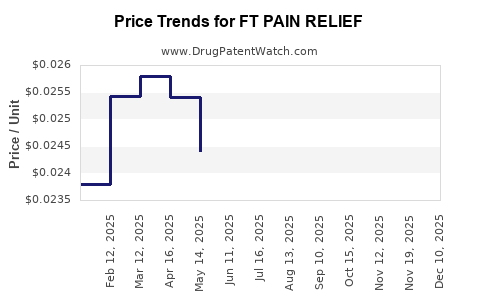Drug Price Trends for FT PAIN RELIEF
✉ Email this page to a colleague

Average Pharmacy Cost for FT PAIN RELIEF
| Drug Name | NDC | Price/Unit ($) | Unit | Date |
|---|---|---|---|---|
| FT PAIN RELIEF(LIDO) 4% PATCH | 70677-1188-01 | 0.91018 | EACH | 2024-11-20 |
| FT PAIN RELIEF 200 MG TABLET | 70677-1244-01 | 0.03534 | EACH | 2024-11-20 |
| FT PAIN RELIEF 325 MG TABLET | 70677-1243-01 | 0.02207 | EACH | 2024-11-20 |
| >Drug Name | >NDC | >Price/Unit ($) | >Unit | >Date |


